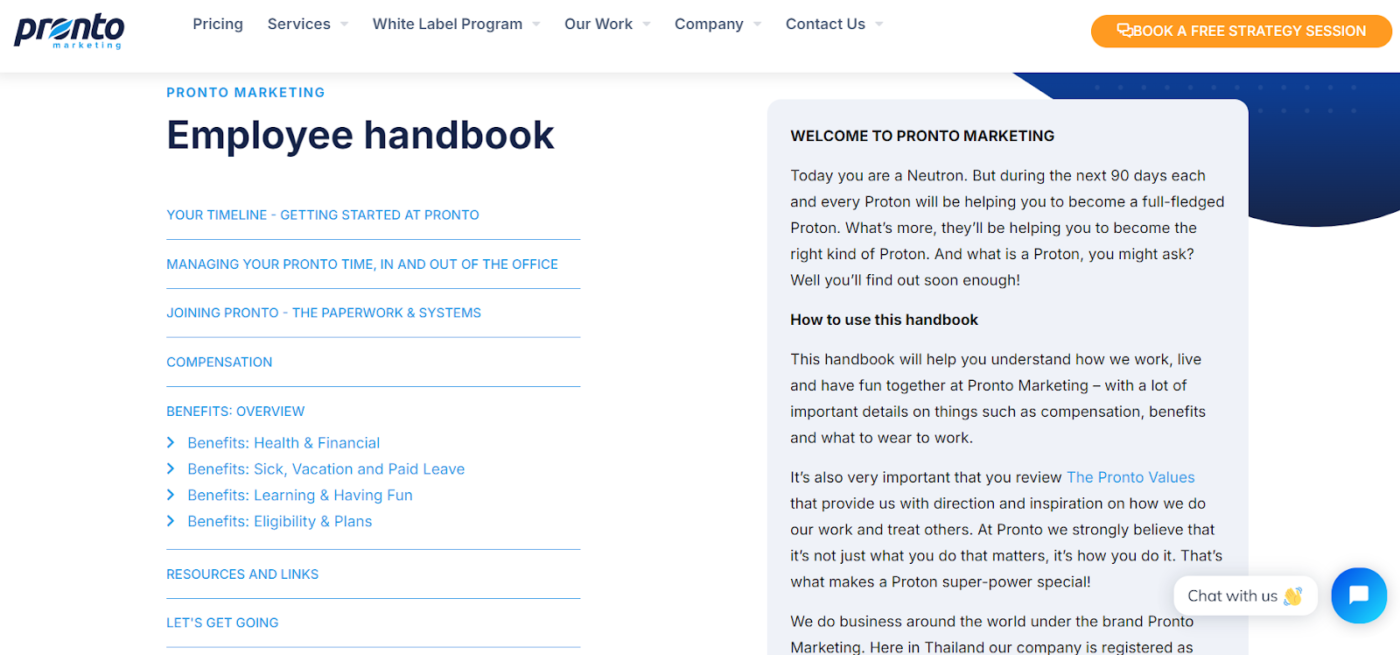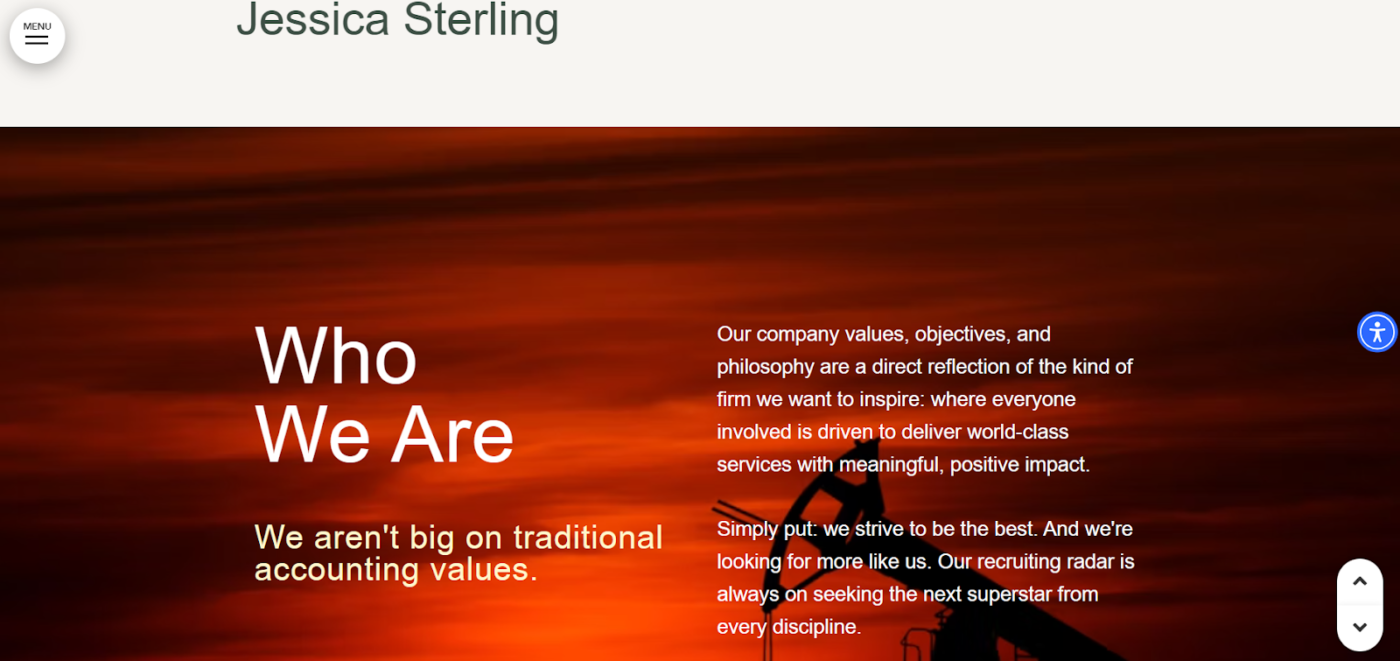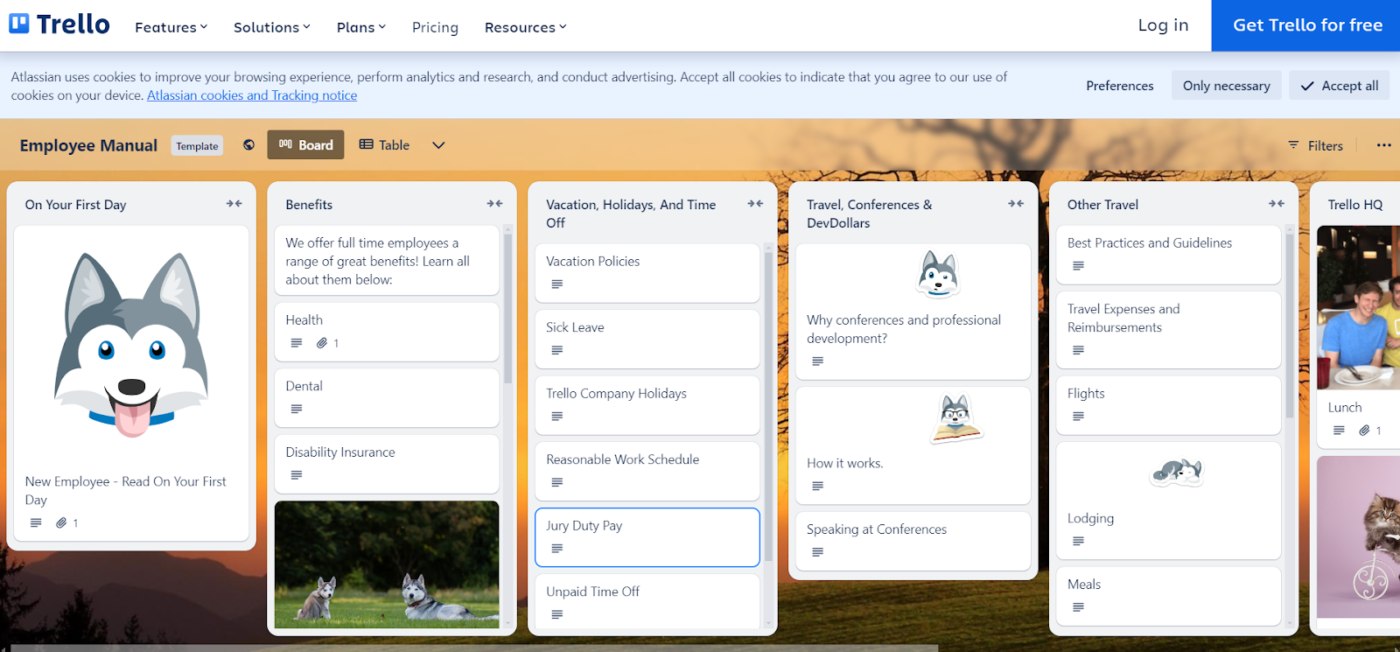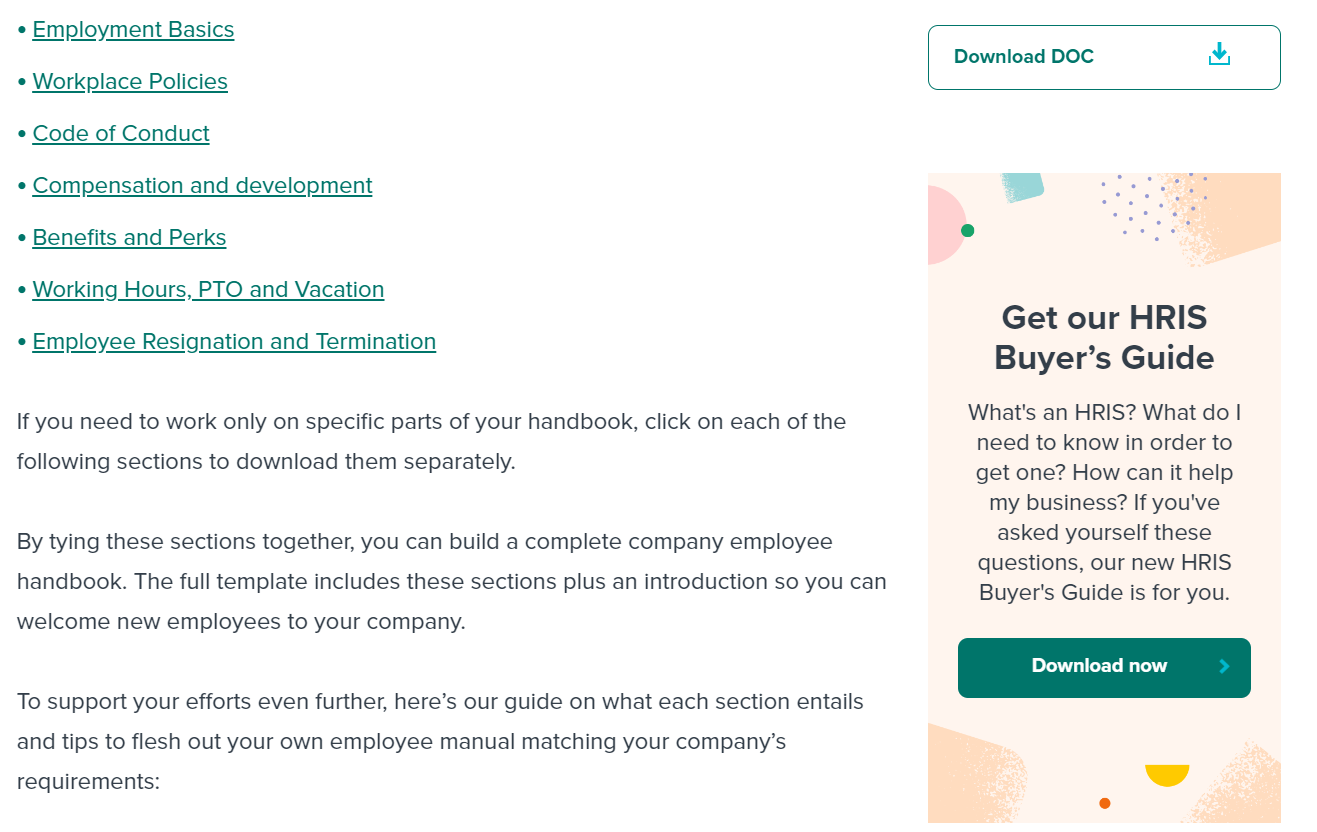Key takeaways
Why you can trust my advice
I am an HR expert who has created and updated employee handbooks and written HR policies for several small businesses and startups. I have an MA in Industrial-Organizational Psychology and extensive experience researching employment laws and compliance concerns. I leveraged my past experience and knowledge to compile a detailed overview of the best employee handbook examples, as well as the key items to include in your handbook.
What is an employee handbook?
Employee handbooks provide in-depth information about your organization’s mission, values, and policies to help orient new hires to your team and provide a centralized reference point for current employees. Having an employee handbook and updating it regularly is essential in providing clear, consistent expectations for all team members within your company, and ensuring that your policies are updated to reflect current employment laws.
Previously, organizations provided physical employee handbooks, but now most employers distribute them electronically for easy access and to save paper. Electronic distribution also makes it easier to ensure that everyone is accessing the latest copy of the handbook, as they should be updated at least once per year or whenever there is a change in policy or employment law.
Employee handbook vs. policy guidebook
Employee handbooks are sometimes confused with policy guidebooks, but they are usually approached as two separate things. Employee handbooks are written with employees as the intended audience, whereas policy guidebooks are for managers and HR personnel in charge of carrying out the policies.
For example, an employee handbook would educate employees on their eligibility for FMLA leave and tell them where to direct leave requests. A policy guidebook would walk the HR administrator through how to review and approve requests in accordance with federal law, including sending out required eligibility notices and handling medical certifications.
Top 5 employee handbook examples
Pronto Marketing, GitLab, Sterling, Trello, and Workable are my favorite examples of thorough and creative employee handbooks.
1. Pronto Marketing
This marketing firm does a great job at organizing information in its employee handbook. This is also a great example of a more concise handbook. It covers all of the core information without being wordy, which is great because it can be overwhelming for new employees to sift through denser handbooks.

2. GitLab
GitLab’s employee handbook has product and department-specific information along with a more in-depth company information section. This is a good example to follow if you want to integrate your handbook with department policies and procedures.

3. Sterling
Sterling’s employee handbook does a great job of emphasizing the company’s values and culture before diving into the policies. This is really helpful in orienting new hires to the company when they first receive the handbook and also creates a positive, welcoming tone before diving into the policies.

4. Trello
Trello’s employee handbook example showcases a creative method of distributing your employee handbook digitally. The contents of the handbook are organized on Trello’s signature Kanban board layout.

5. Workable
Workable offers an employee handbook template that can give you a great starting point for building your own handbook. It’s a very thorough 36-page handbook and includes an acknowledgement page for employees to sign. This is a great starting point if you’re not looking to start from scratch when writing your handbook.

What is included in an employee handbook?
Employee handbooks are usually fairly long and dense, because they’re jam packed with important, detailed information.
Welcome statement
Many employee handbooks open with a welcome statement, often from the CEO or an HR leader, to greet new employees who are receiving the handbook on their first day of work. It’s a great way to start your handbook off on a warm, positive note before diving into all of the rules and restrictions.
Company information
Toward the beginning of the handbook, give new employees an overview of your company. Your mission statement and values are a great way to introduce your overall culture and purpose to new hires. It is also helpful, but not required, to give a brief overview of your company history.
Related: Culture vs. Values: What’s the Difference?
At-will employment statement
The at-will employment statement is usually located toward the front of the employee handbook and is reiterated multiple times throughout — it’s one of the most important parts of your handbook from a compliance perspective. It states that the employee is employed at-will and that the company or employee may terminate the employment relationship at any time, with or without cause or advanced notice. It also clarifies that the handbook is not an employment contract.
Note that Montana is currently the only U.S. state that does not allow at-will employment, so you will need to note this exception or have a separate version of your handbook if you have employees (even remote ones) in Montana.
Employment terms and policies
Here are the main employment policies you should include in an employee handbook:
- Code of conduct: Sets expectations for employees’ professional conduct and ethical standards.
- Employee classification: Provides an overview of the different employee classifications, such as exempt and nonexempt, to help ensure that employees understand their classification and how they will be compensated for overtime.
- Equal opportunity employment policy: States that your company does not discriminate on the basis of race, ethnicity, religion, sexual orientation, gender identity, genetics, or ability status in regards to hiring, promotions, disciplinary action, or firing.
- Anti-harassment policy: Defines harassment behaviors and consequences for violations.
- Drug and alcohol policy: Outlines your company’s guidelines around drug and alcohol use and drug screening, if applicable.
- Social media policy: Explains any guidelines on social media usage, such as not disparaging the company or its partners or posting hateful or harassing content online.
- Workplace safety policy: Emphasizes the importance of maintaining a safe work environment through following all equipment safety precautions, not bringing weapons to work, and following any other safety concerns relevant to your business operations and industry.
- Dress code: Explains any expectations around clothing and grooming at work.
- ADA information: Details the process employees should follow to reques ADA accommodations.
Time and attendance policies and procedures
Provide employees with an overview of attendance, time tracking, and time off policies, including:
- Time tracking and timesheet procedures: Explains your time-tracking expectations, including the pay periods, approval processes, and other requirements like clocking in and out or manually submitting a timesheet each pay period.
- Work schedule policies: Outlines information about set shift schedules, flexible scheduling, scheduling for minors, and other necessary specifications.
- Information on lunches and breaks: Informs employees what breaks they are entitled to and when they should be taken. Ensure that your policy complies with all relevant state and local break and youth employment laws.
- PTO policy: Explains guidelines around paid time off use and request processes.
- Attendance policy: Sets expectations around employee attendance and the potential consequences for excessive absenteeism and tardiness.
- Company holidays: Lists the paid company holidays for the year and any policies related to them, such as paid holidays that fall on weekends or holiday pay for part-time staff.
- FMLA eligibility and procedures: Complies with the Family and Medical Leave Act if applicable, including information on FMLA eligibility and leave request procedures.
- Leave policies: Describes other leave programs such as military leave, bereavement leave, time off for jury duty, paid parental leave, and more.
Employee benefits
While your handbook doesn’t need to go into every employee benefit and plan offered, some basic information should be included in your handbook, such as:
- Benefits eligibility: Explain who is eligible for benefits within your company. Are only full-time staff members benefits-eligible or are some available to part-time or temporary staff?
- Brief benefits overview: Give a quick overview of the benefits you provide, such as health insurance plans, 401k programs, and fitness reimbursements. Include any important clarifications like eligibility periods.
- Worker’s compensation policy: Explain that you have workers compensation coverage and let employees know that they must promptly report any workplace injuries.
Handbook acknowledgement
This is an acknowledgement form for employees to sign confirming that they’ve received the employee handbook and are responsible for reading and complying with the policies included in it. It’s important to keep track of these signed acknowledgments, so consider collecting signatures electronically with a service like BambooHR’s electronic signature software.

What should not be included in an employee handbook
While employee handbooks are great compliance tools when prepared carefully, they can also be a liability if you include particular policies or write them in a particular way.
Any policy language that could be perceived as discriminatory
The EEOC strictly enforces laws regarding workplace and employment discrimination, including any prohibited policies that have a disproportionately negative effect on applicants or employees of a protected class.
Language that contradicts at-will employment
Your at-will employment statement should make it clear to employees that their employment is at-will (unless they’re in Montana or have an alternative employment agreement in place), and they may be let go without cause. However, if other sections of your employee handbook appear to make promises of job security or that employees will not be fired without cause, courts may uphold employees’ claims of wrongful worker termination.
In Foley v. Interactive Data Corp, a court held that “the trier of fact can infer an agreement to limit the grounds for termination based on the employee’s reasonable reliance on the company’s personnel manual or policies.” Therefore, you’ll want to ensure that your handbook does not contain language that could make a team member reasonably believe that they will not be terminated without cause.
Policies that infringe on employees’ rights
In 2023, the National Labor Relations Board set a new standard that prohibits policies that could be perceived as interfering with employees’ right to work together to improve working conditions or pay, with or without a union. The new standard prohibits workplace policies that could be perceived as interfering with employees’ right to work together to improve working conditions or pay, with or without a union.
Under the updated guidelines, employers cannot enforce workplace rules that have a reasonable tendency to chill or discourage employees from exercising their NLRA rights. Businesses will need to prove that any such rules serve a bona fide business interest and that there is not a narrower rule available that would serve the business purpose.
Benefits of an employee handbook
Employee handbooks offer numerous important benefits, particularly in the context of onboarding, employee relations, and compliance.
Welcoming and educating new hires
New hires typically receive their handbooks during employee onboarding to provide crucial information about the company’s culture, policies, and procedures. This helps new hires understand what is expected of them, how to handle common processes like timesheets, and provides a reference point for key policies that may not be included in onboarding presentations or training sessions.
Setting and maintaining clear expectations for employees
Your employee handbook should have clear written policies to ensure everyone has the same expectations. It offers a single source of truth for current employees who have questions or concerns regarding current workplace policies.
This can also reduce the burden on HR team members to respond to employee policy questions. Instead of reaching out to HR with questions, employees can reference the employee handbook for answers to common questions.
Minimizing legal risks
One of the most important functions of an employee handbook is protecting your company from lawsuits and compliance issues. From clearly establishing at-will employment to making it clear that you are an equal-opportunity employee who will not tolerate harassment or discrimination, having your policies on record and in writing can protect you from legal claims.





